Behind the Scenes Series: Meredith Coloma
Welcome to the She Shreds Behind the Scenes Monthly Series. Each month we interview women behind the scenes in the guitar and music industry.
“She’s not going to go away, so you might as well just say yes off the bat.”
Polite persistence paid off for Meredith Coloma as a teenager, back when she was an aspiring guitar builder. She was described like this by master guitar builder Roger Sadowsky and the then semi-retired builder Michael Dunn. Haunted by the tone of her childhood guitar instructor’s acoustic Dunn guitar, Coloma approached Michael after working with Sadowsky and completing study at a guitar building school, which taught her how to use tools, but left her desiring additional instruction. She had an idea of the tonal and design quality she was looking for and wanted to get it.
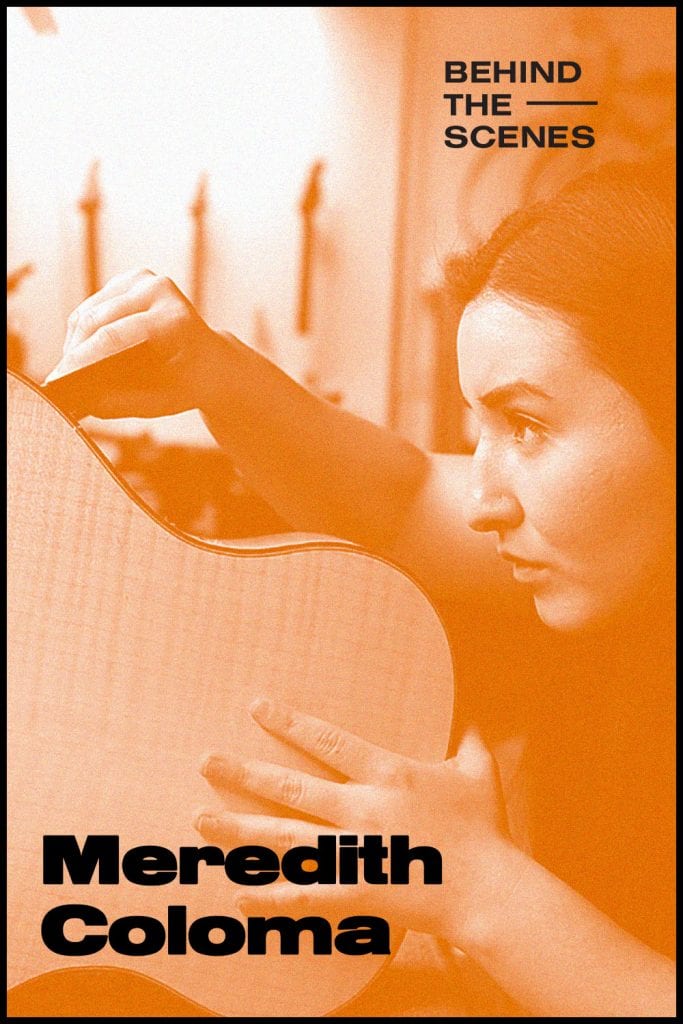
Initially uninterested in taking on a new student, Dunn was intrigued. Who was this young woman that contacted Sadowsky at 17 to learn to make a better guitar? Why was she interested in acoustic instruments after spending time learning how to build electric guitars and basses? While persistent, her politeness grounded their interactions. He decided to check references, calling Sadowsky, who vouched for his former pupil.
Dunn’s decision to work with Meredith marked a turning point in her career. As Meredith puts it, “That was the beginning of my journey into the magical mind of Michael’s creativity. He taught me how to unlearn all my limiting beliefs about building an instrument without jeopardizing, and often improving, the structure and tone.”
Years later, Coloma is still both polite and persistent. She is the owner and founder of multiple businesses: her namesake guitar company (Coloma Guitars, where she builds and repairs instruments and teaches workshops) and Pacific Wood Lab, a workspace equipped with machinery for craftspeople. She also co-produces the Vancouver International Guitar Festival with Shaw Saltzberg, an event-packed experience that mixes builders, clients, and vendors.
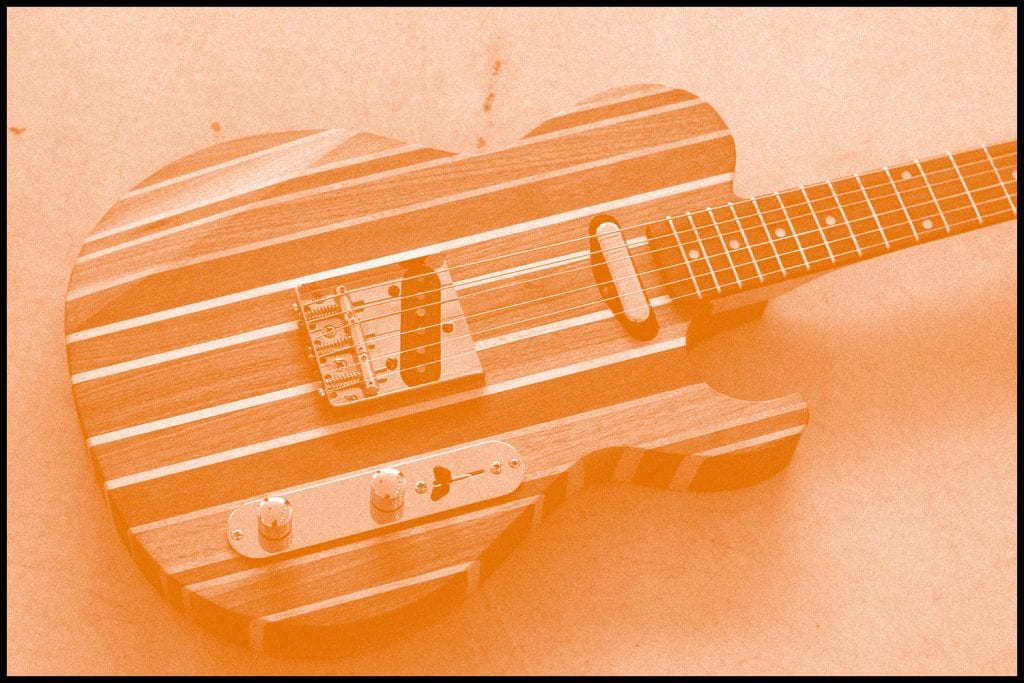
In recognition of her work, Coloma received the Top 30 Under 30 Award from BC Business magazine—no small feat, as Coloma was the only craftsperson represented amongst awardees. Between building guitars, teaching workshops, and running her other businesses, Coloma took time out of her schedule to tell She Shreds about her work and give advice to aspiring craftspersons and entrepreneurs.
What is a typical day at your business like? How much time do you spend building instruments versus managing the business?
Teaching my customized courses and workshops to my instrument building students can be for just a couple of hours on weekends or evenings or very intensive; it depends on the student. Sometimes they are local students while others come from far away places, like Qatar. Some are retired hobbyists; some are young people wanting to start a career. There is no typical day.
Because I work with students who have a flight to catch so occasionally, if they sand through something or make an alteration, we work long hours.
Repairs and builds are ongoing, as is marketing and organizing the Festival and growing Pacific Wood Lab.
The Vancouver International Guitar Festival has a staff of three: me, Shaw and our amazing everything person, Jenny. William is my VWL partner and CNC genius. I’m also very lucky to have Henry, my invaluable shop manager, who keeps the shop running when I am away. This allows me to spread my time between everything.
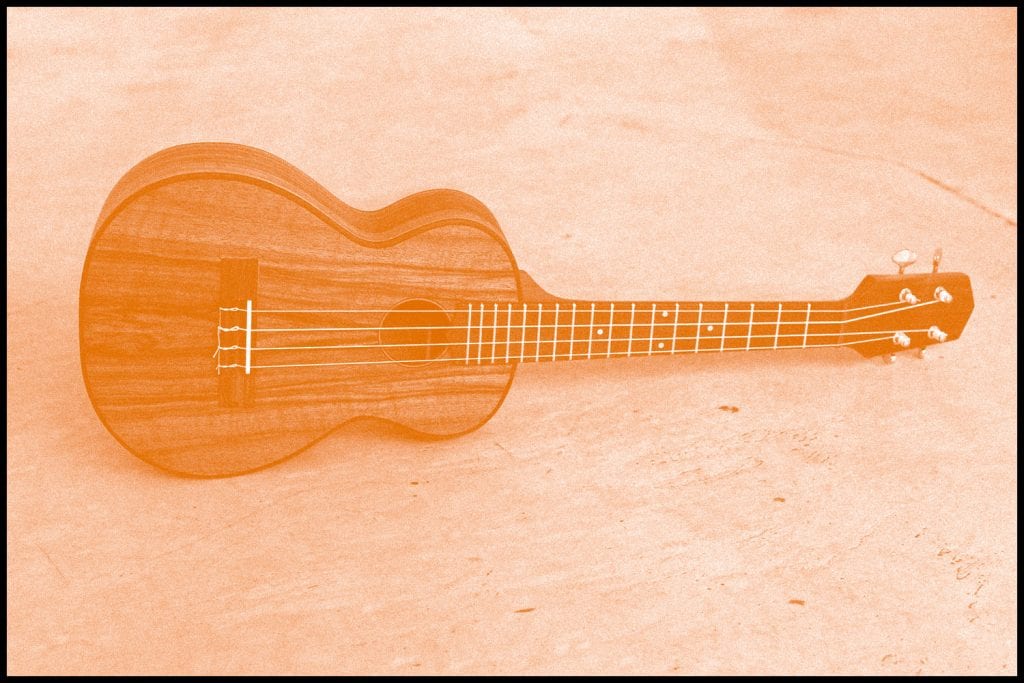
What was your educational experience like? You’ve studied with different builders. It would be fascinating to know how your experience varied over time and in different educational contexts.
I learned the very basics from a guitar school that taught me how to use the tools; I had no background in that so it was very necessary. But the electric and acoustic instruments I was building there weren’t what I wanted. So I went to top specialists in their field: Roger Sadowsky for electric and bass guitars, and Michael Dunn for all types of acoustic stringed instruments.
With Sadowasky, I learned not only about superior tone wood, components and attention to detail but also about running a small business and customer service. Similarly, with Michael Dunn, I learned curved joinery; creative problem solving in building unique instruments; pushing boundaries of design esthetics; and working with non-traditional design methods without compromising on tone.
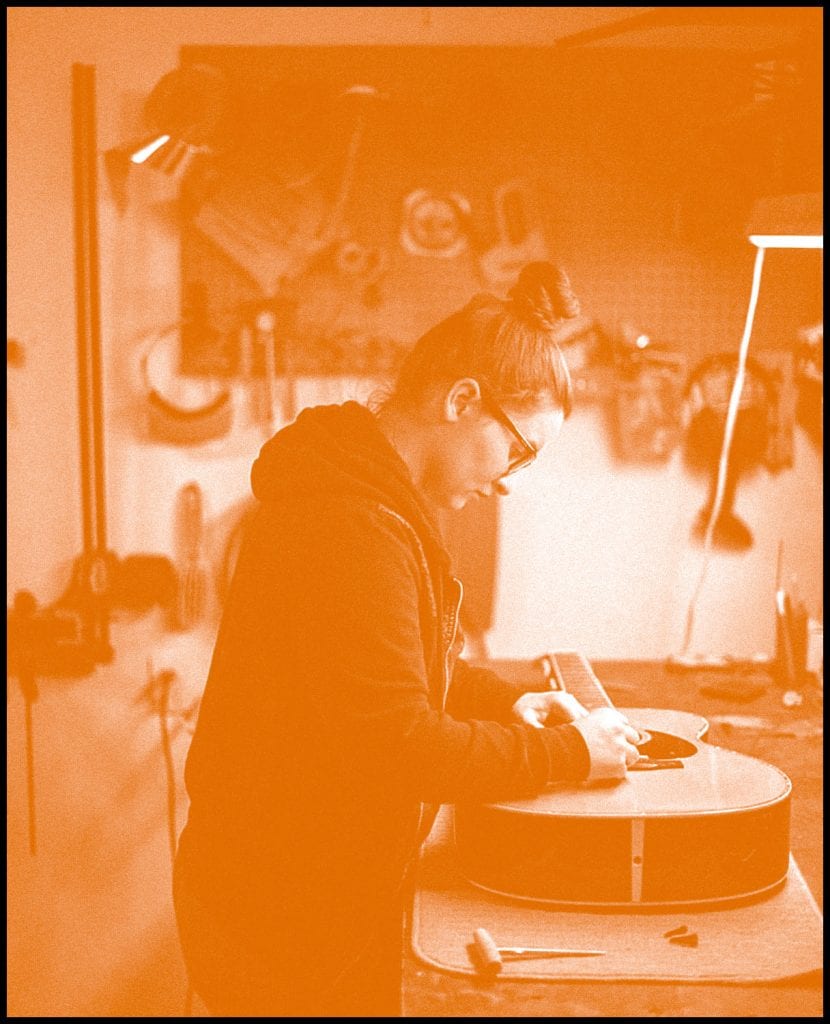
What’s something that’s misunderstood about your job?
In the most tangible sense, people don’t realize the hours of sanding and grunt work involved. From a more philosophical perspective, however, I have found that builders have resisted collaboration. I enjoy running the festival because we are proving that we can build a stronger industry for everyone if we support each other, challenge and celebrate each other, and match up the right instrument or service to the right builder. We are changing the misunderstanding that we are in competition with each other. We can all win when we support the industry and craftsmanship as a whole.
Could you tell our readers about some of the instruments you’re most proud of making?
Stand out ones are the Sun Guitar and the Tree Guitar. The Sun Guitar was an Art Deco OM guitar with an internal wooden resonator. The Tree Guitar was a lot of detailed joinery and inlay work with over 80 pieces of inlay. In both cases, I was really happy with the tonal outcome. The Sun Guitar had great write ups in Guitar Aficionado Magazine, Fretboard Journal, and Acoustic Guitar Magazine.
The stand out guitar built by one of my students is Trevor’s patchwork guitar that came from me teaching him joinery and him taking it to the next level. That kind of collaborative work gives me a high.
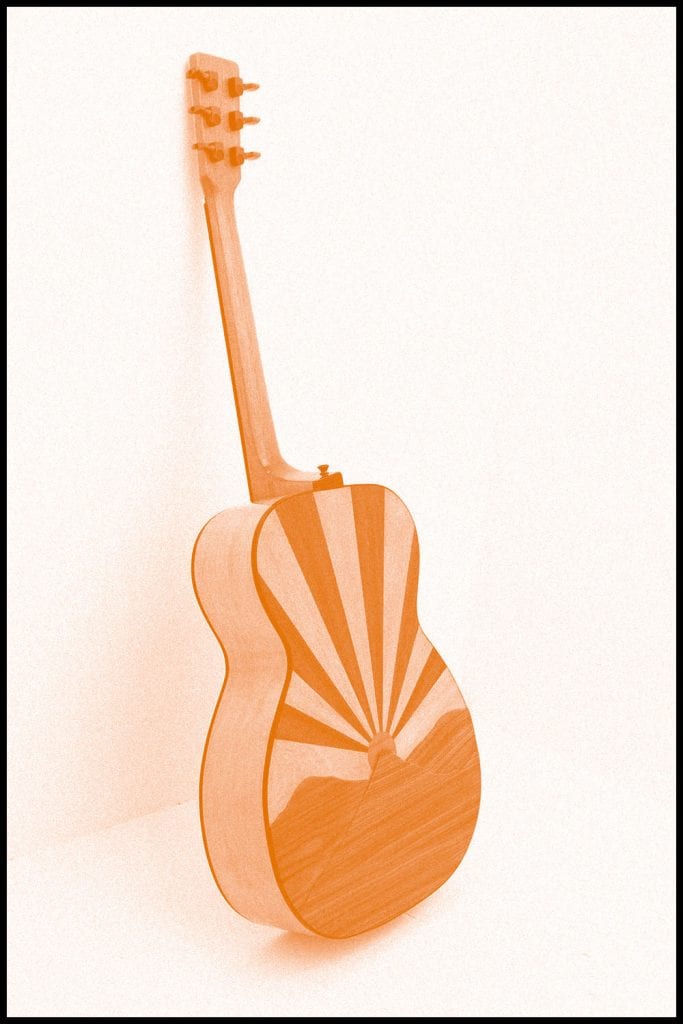
What’s the most challenging thing you’ve ever built?
A business! As a craftsperson, finding a balance of building a profitable business from traditional craftsmanship in one of the most expensive cities in the world is much more challenging than the perplexities of building or repairing any instrument.
What tools do you use to do your job?
A mixture of hand tools and machinery, including a band saw, drum sanders, hand planes, and chisels. My favorite instrument is a 1/16th inch micro-chisel for detailed inlay.
Do you have thoughts on how advances in manufacturing technology (e.g., CNC routers, 3d printers) have impacted the field?
I have CNC machines. There will always be traditional clients that want everything done by hand, and that’s an important tradition that needs to be honored. But for small business owner/craftsman, there is a benefit to embracing technology for certain aspects of the build, like fretboards, bridges, templates and moulds that can allow for more precision and time management.
Having the foundations in handcrafted skill, but embracing technology, allows small business owners a greater likelihood of economic viability and diversity in what we can offer clients. Robots are my friends; but so are my old chisels.
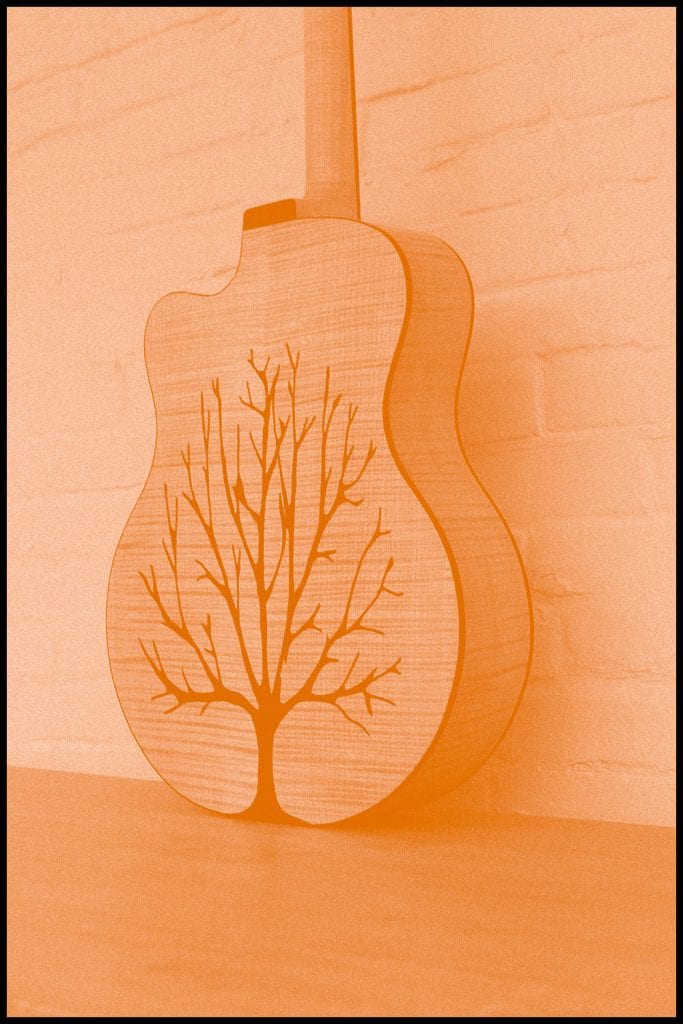
What advice would you give a reader interested in breaking into the field?
I found it effective to invest in basic woodworking and guitar building skills before I applied for individual apprenticeships. I had my own strong ideas on what I wanted to create, but I put that on hold to soak up all the knowledge I could from these experts. Then later, I experimented with combining what I learned from them and my own ideas. Michael was very helpful after my apprenticeship about being open to troubleshooting and problem solving with me on new creations and encouraging me to develop my own style.
Are there any resources (e.g. books, articles, educational programs, etc.) you would recommend to our readers who might be interested in pursuing a career in the field?
Absolutely! Coloma Guitars lol. I offer courses and workshops customized to help you build your own dream guitar.
A few books that I reference often and think every builder should have in their library are Trevor Gore and Gerard Gilet’s Contemporary Acoustic Guitar Design and Build and Ervin Somogyi’s Making the Responsive Guitar trilogy.



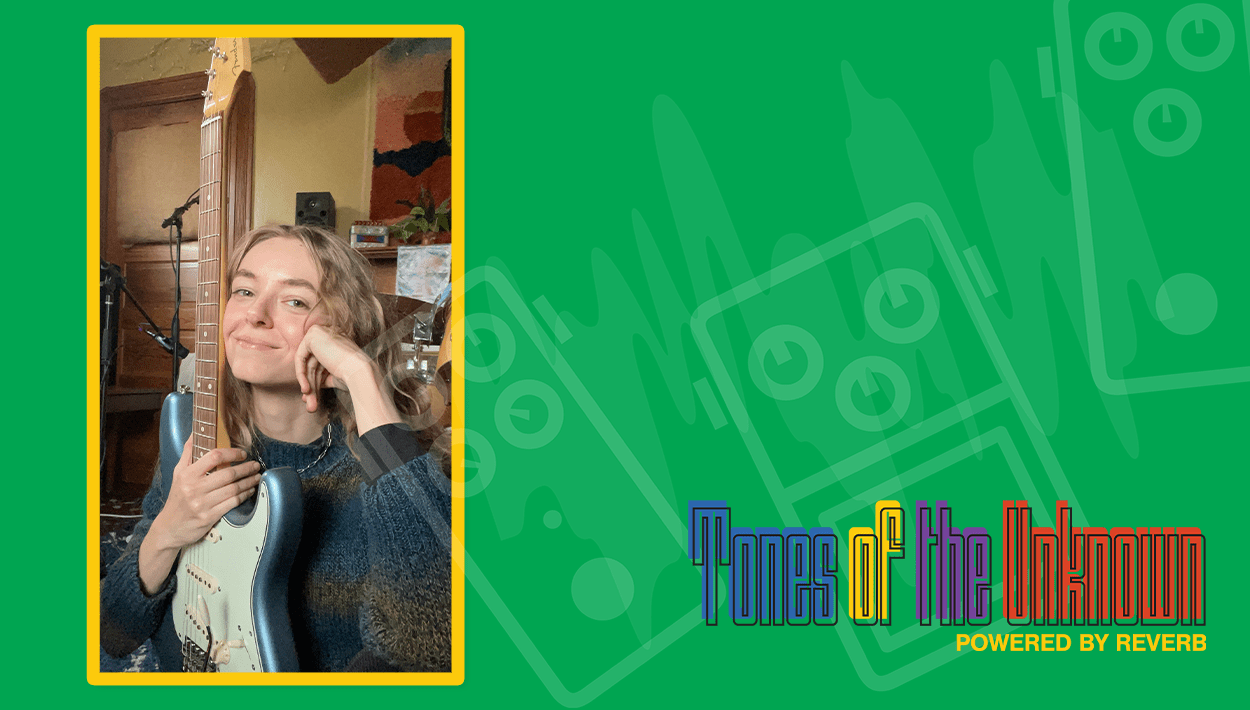
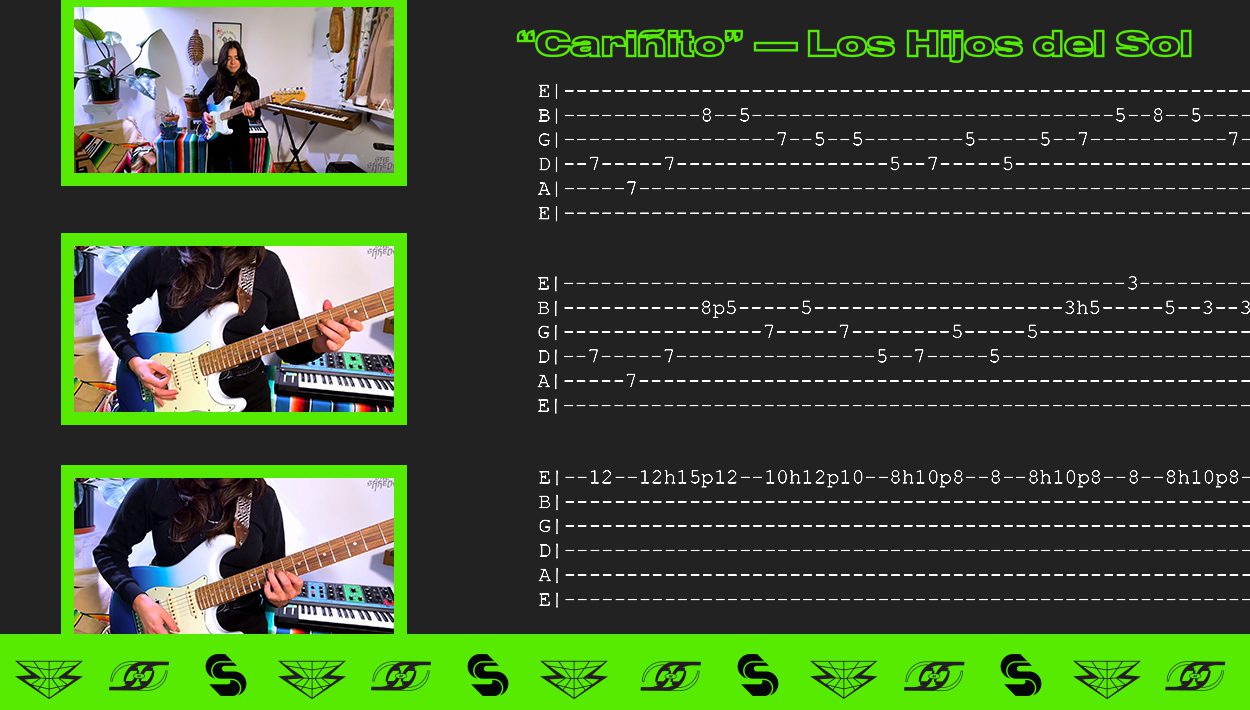



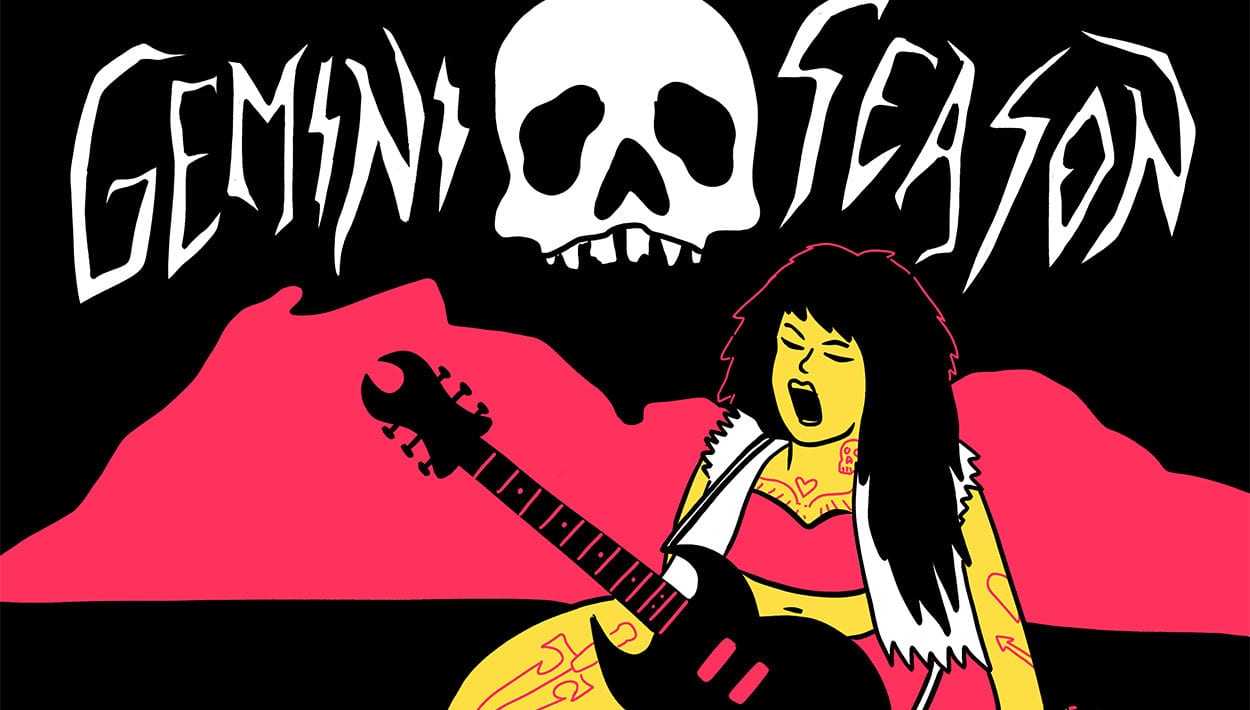

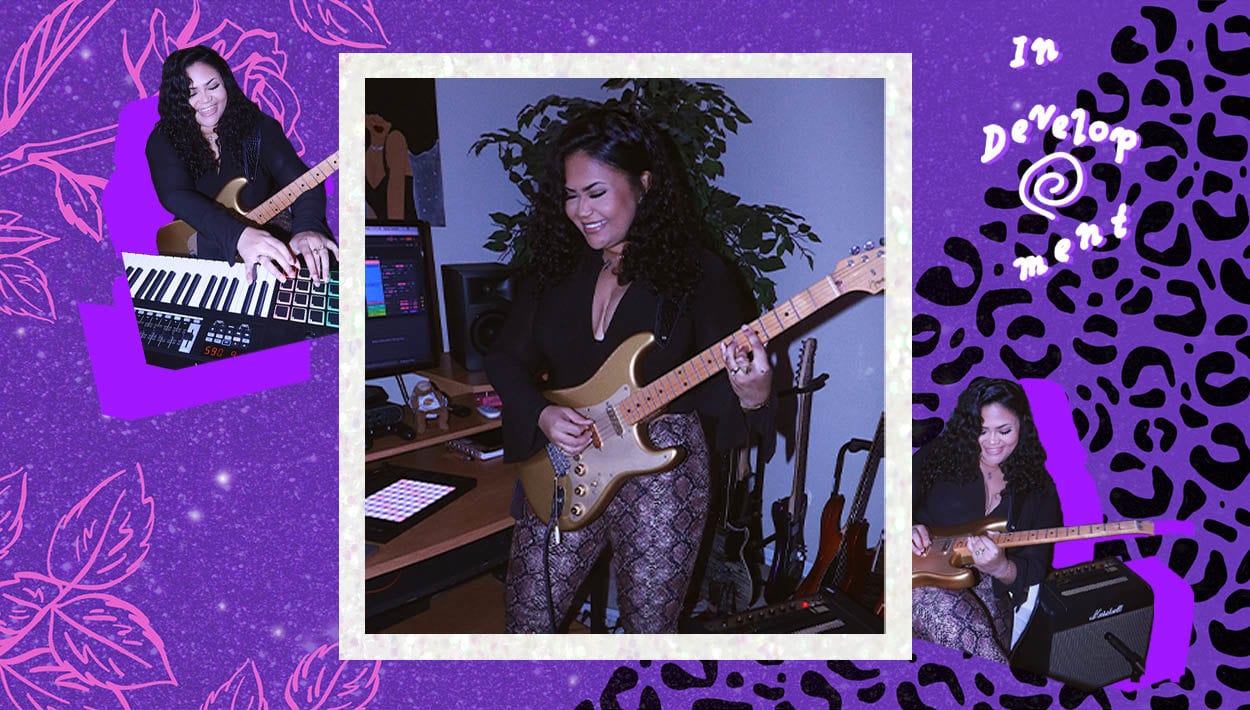
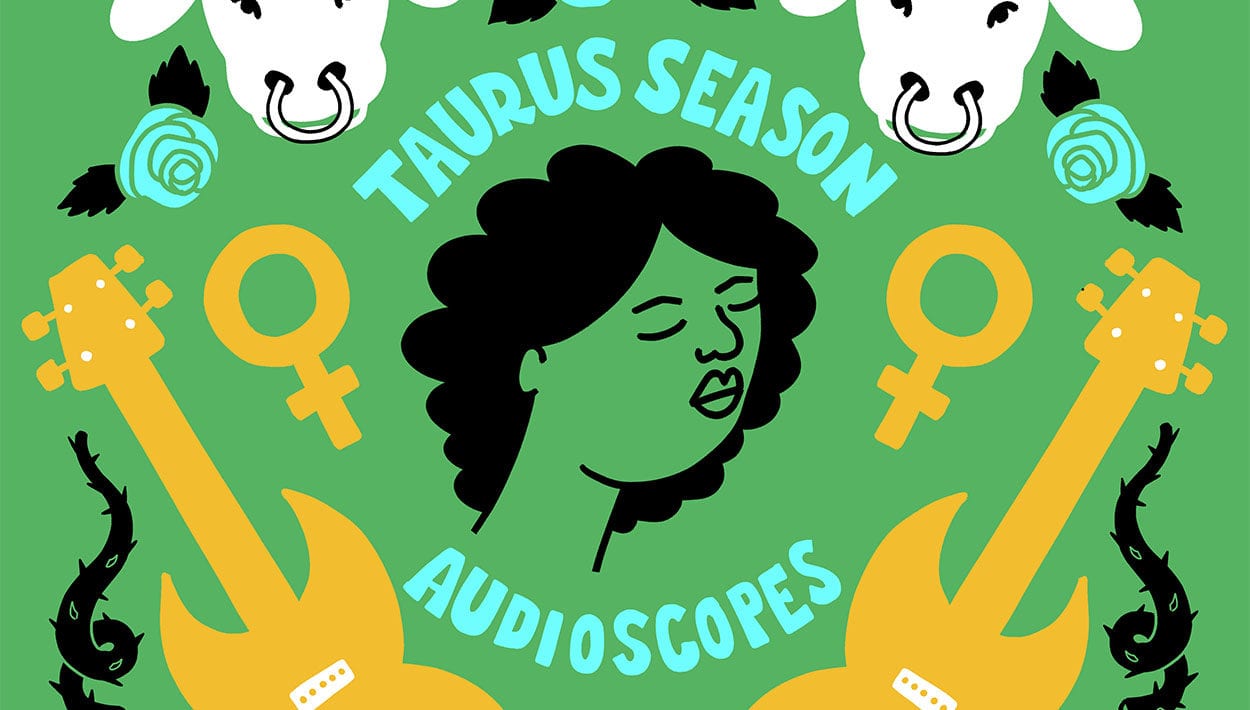


Comments
A talented, articulate, inspiring woman – thank you for this article!
Comment by Leah Price on June 27, 2019 at 12:25 pmDear folks Your advice would be greatly received. I am discovering Meridith Coloma does not have a good working reputation as may be portrayed. My husband and I paid thousands of dollars for our son to fly out from Ottawa Ontario, to complete a 2 week guitar course at the end of May/beginning of June 2019 with luthier Meridith Coloma ,Coloma Guitars ,1636 Franklin St, Vancover , V5L 1P4. He completed the course, however was unable to come home with his guitar as it had some last minute touches that could not be completed before he flew home. Meridith Coloma promised to ship the finished guitar. Meridith Coloma has since ended all communications with our son with no explanations and multiple attempts from our son to retrieve his guitar have come to dead ends. She last
Comment by IngridGalley on October 14, 2019 at 9:04 amShe last claimed she had three times mailed it through Canada post, then claimed it was lost , both times refusing to produce a tracking number. Since this time I have found another client with similar circumstances. I would very much appreciate your advice on how to proceed in the matter before I contact the RCMP police officially this week ,as we believe we have been defrauded.
Comment by Ingrid Galley on October 14, 2019 at 10:09 amRegards
Ingrid Galley
Meredith Coloma please resolve the issue you have with my son !
Comment by Ingrid Galley on October 15, 2019 at 12:18 pmJack received his guitar today. Thankyou
Comment by Ingrid Galley on October 18, 2019 at 2:46 pmIn 2014 I bought a acoustic guitar kit online from Bluegrass guitars. A local guitar shop owner suggested Meredith Coloma Luithery, so I went and talked to her and she agreed to help me build it. So starting in July 2014 we built it. I made it very clear to Meredith that I wanted a nice playing guitar, not a piece of wall art.
Comment by Norman Okkerse on October 16, 2019 at 8:48 amIt took 6 months to build even though a lot of the hard stuff was already done. The sides were already bent, top and back roughed out, fretboard ready for frets etc.
So I took it home just before Christmas 2014 as a Christmas gift for my wife.
That night while sleeping I awoke when I heard a twang. When I got up the next morning I discovered the bridge had snapped. I contacted Meredith and she said she would fix it for free. So I took her the guitar and she removed the original bridge, but when she did she damaged the top. It splintered when she took the bridge off. She carved a new bridge that was at least double the height of the original, ang gave me the guitar back. I noticed she got ebony dust in the French polish finish I put on the guitar.
When I left with the guitar Meredith said she wanted to try holding classes for electric guitar builds and offered to let me build one for free, starting in March or April 2015 and I said sure.
I messaged her a few times in March and April of 2015 asking when the electric build was going to start.
No replies.
2016 I sent a couple of messages, no answer.
In June of 2018 I saw a story on her and her guitar fest on Global BC news, (3.5 years after I built the acoustic for those playing at home) and sent her a message. I nearly had a heart attack when she replied. I told her the acoustic was unplayable, it couldn’t even be tuned let alone played. She said to bring it by her shop and she would look at it. When she looked at it she discovered the bridge she put on was coming off. She said she wanted to fix it right and replace the top and bridge for free, and let me build the electric she offered 3.5 years ago.
They were moving her shop for the 5th time in 4 years and organizing Guitar Fest 2018 so she said it would take a couple of months to fix the acoustic.
Fast forward to October 2018 and I start building the electric. It took 5 months to build because I could only work on it 1 day a week so it was done in February.
All the time I went to her shop I rarely saw her working on any guitar let alone my acoustic. She spent most of her time on her phone, texting or whatever.
She took several weeks off during the electric build, saying one time her car was broken into. Another time she was apparently sick according to her business partner Henry. Then she was allegedly in the hospital with pneumonia. I asked Henry which hospital so I could send flowers but he said he didn’t know. Really? Your business partner that you work with every day doesn’t know what hospital you’re in?
Anyway I went home with the electric in February 2019 and she said another month or so for the acoustic. So after a month I messaged her for an update. No reply. So a week later I message again, still no reply. In April I messaged her again about the acoustic but no reply. So I keep asking for an update every once in a while. Never any reply. Finally a week before Guitar Fest 2019, a year since she got the acoustic I sent her a message that I was going to pick up the acoustic whether it was done or not.
She blew up. She said she was stressed out over the guitar fest and if I wanted to come and get the guitar without a top on it I could.
She then changed her mind and said she didn’t want me around her shop and she got my address so she could ship it.
We live in the same city, she could have drove to my house in 30 minutes and handed it to me.
My wife who technically owns the guitar messaged Meredith and asked her to please fix her guitar and deal with her instead of me.
No reply.
My wife messaged her several times since June when I was going to go pick it up.
My wife kept asking what’s happening with her guitar. Never any reply but we know she read the messages because her profile picture appears next to the message when it’s been read on Facebook Messenger.
So 3 weeks ago my wife messaged her that she wants to go to Meredith shop to pick it up. Meredith read the message but didn’t reply.
When we got to her shop I showed my wife which door to go in. I parked the car and my wife came right away. She was confused which door so I walked her to it, but it was locked so we left.
The next day Henry called my cellphone at work and said he didn’t appreciate me going down to the shop.
I said I came to get the guitar. He called me a bunch of names I will not post here. Henry called me an old man with a bad back and a pussy. He said they sent the guitar months ago and provided a tracking number. I said we never got any message from them.
He said their lawyers sent me emails. No email ever came from any lawyer. He said I signed for the guitar but I never signed anything.
He accused me of trying to start an extramarital affair with Meredith when I wanted to send her flowers when she was allegedly in the hospital. Meredith is gay and is in a relationship with another woman. Henry took a screenshot of me asking him what hospital she was in so I could send flowers. He sent the screenshot to my wife thinking my wife would get mad.
Henry accused me of ” fucking with me and fucking with my business “. He owns Wood Labs I guess. He said I posted it on the Google.
He said I got the acoustic guitar and I’m playing games.
I never got the guitar. I never signed anything.
I paid Meredith $1923.20 to help me build that guitar. I can prove it, I have pics and cancelled cheques. I asked Henry to take a picture of the way bill they filled out when they allegedly shipped it. No reply.
I asked Henry to take a screenshot of the Google where I allegedly said something about him and Wood Lab. No reply.
So I have no guitar. No money. They allege they shipped it but can provide no proof.
The alleged I signed for it but have no proof.
Coloma guitars and Meredith Coloma have not responded to any of me or my wife’s enquiries about her guitar since June. Totally unprofessional. I dropped off a complete guitar 15 months ago for a top replacement. I have not seen it since.
Meredith’s business partner Henry alleges they shipped my guitar months ago. They never even told me. They allege they sent a tracking number.
Comment by Norman Okkerse on October 16, 2019 at 9:09 amShe has not answered any message since June.
They allege I signed for it. I signed nothing.
I want my money back Meredith, you can keep the guitar. $2423.20 certified cheque only.
If you’ve ever wished you had the opportunity to earn money for writing your essay then you should check out a site that can allow you to write an article for cash, https://bestessayservicesradar.com/expertwriting-review/ will allow you to compose your essay and after that, they’ll have a set price they want you to get paid. It can be very exciting to make money for writing your own essay, you have control of the amount of quality and will ensure it is unique for you.
Comment by Daniel on May 29, 2022 at 4:57 am